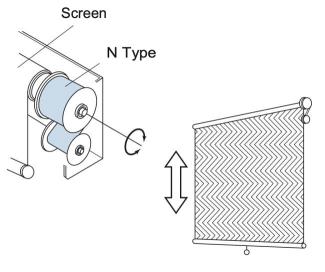What is NW Type?
A unit that can obtain a constant drawing force (i.e. returning force) regardless of how far the terminal attached to the wire (i.e. tip mounting plate) is stretched.
A unit that can obtain a constant drawing force (i.e. returning force) regardless of how far the terminal attached to the wire (i.e. tip mounting plate) is stretched.
An N Type CONSTON can generate a rotational force and wind wires, and its tension can be used.
It is suitable for applications without guide rails because routing is possible with the wire.
It can also be used as the rotational force source, and the torque is constant regardless of the number of rotations.
It is also possible to design to achieve more than 50 rotations.
Motor-like behavior can be obtained with a simple structure.
Compared to mainsprings, the full power is reached with a little pre-winding.
The object to be handled as the load (i.e. workpiece) has no guide for movement, and a degree of freedom is desired.
Running with a wire (e.g. when it cannot be installed linearly)
No space for C Type CONSTON
Preventing the CONSTON spring from coming into contact with any other objects
The stroke is insufficient with C Type CONSTON.
A C Type CONSTON is improper in terms of appearance because the spring is pulled out as it is.
Because of high-power products, for the NWT, NWG, and NWH Types, the tip mounting plate has two screw holes for easy mounting. Use the screw holes as shown in Figure 1, and use the weight only during mounting. This way, it can be easily pulled out to the mounting position. (Procure a weight having a weight approximate to the CONSTON output.)
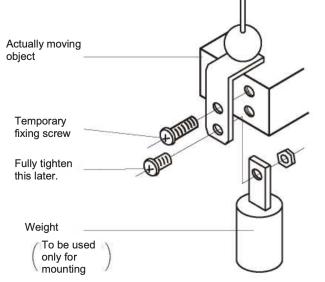
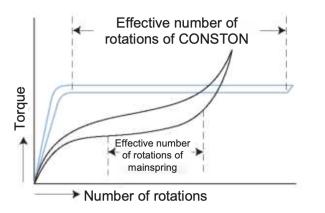
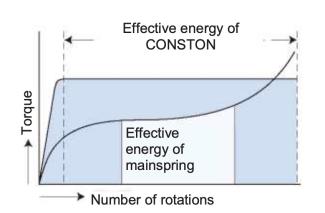
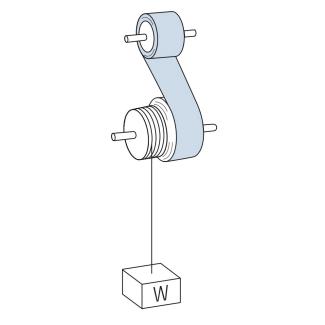
Pulling it with a constant force.
Balancing a heavy object.
Winding it with constant torque.
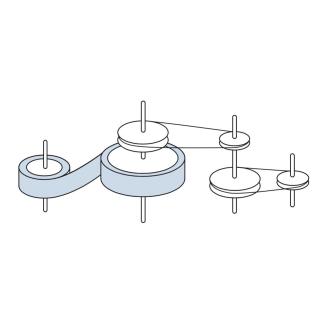
Running it with constant torque.
Rotating it with constant torque.
Using it instead of a motor.
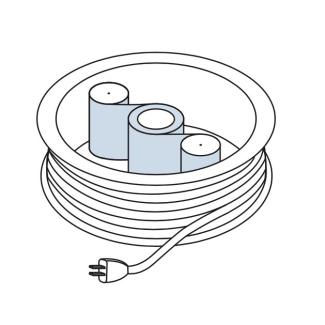
A mainspring is inconvenient because the torque changes.
With a mainspring, the number of rotations is insufficient.
Motor-like behavior can be obtained because of constant torque.
No electrical troubles because no wiring is necessary.
It can be designed as suitable for space.
It can raise the unit stored in a box.
A wire type N Type CONSTON can be freely laid out via a pulley or the like. Motor-like behavior can be obtained with a simple configuration.
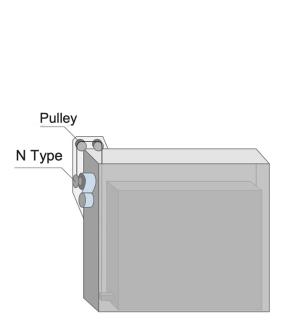
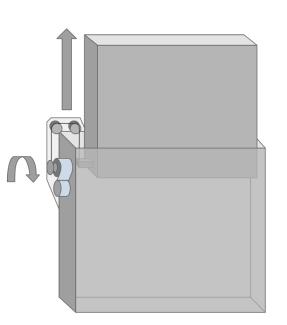
The float rises and falls according to the level of the liquid surface; by rewinding the tape, wire, or the like hanging the float with an N Type CONSTON having constant torque, they indicate the accurate liquid level without slacking. Some oil tankers have a CONSTON spring that can be as long as 35 meters (measured length 40 meters).

Heavy objects can also be balanced using a C Type CONSTON. However, for example, if no guide rail can be installed due to the structure, if the stroke is too long, or if you do not want to pull out the CONSTON spring directly, use an N Type CONSTON and lift it with the wire, tape, or the like to balance the object.
By lifting the blowing outlet of a ceiling-mounted air conditioner using an N Type CONSTON, the filter section can be easily raised and lowered during cleaning.
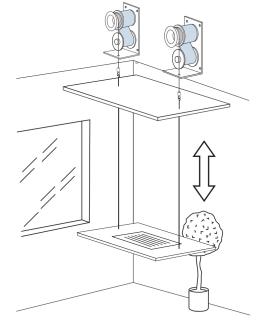
If the weight of the screen is kept to match the tension of the N Type CONSTON, it is balanced without any stopper. You can operate it without stress because the operation feeling is constant.
